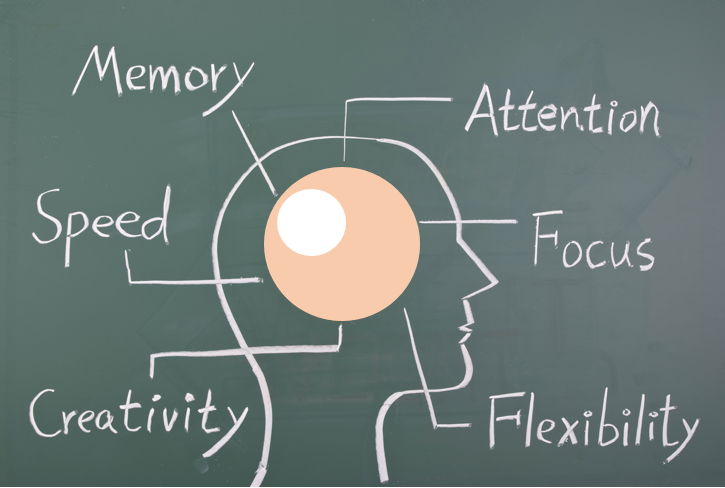Business Insider | A new, game changing technology can put electronics directly into the brain
June 8, 2015
Business Insider — June 8, 2015 | Guia Del Prado
This is a summary. Read original article in full here.
 The Defense Advanced Research Projects Agency is working on brain implants that could restore memories and treat brain damage. Having a brain implant to remember facts would greatly enhance our abilities to take tests and perform everyday work.
The Defense Advanced Research Projects Agency is working on brain implants that could restore memories and treat brain damage. Having a brain implant to remember facts would greatly enhance our abilities to take tests and perform everyday work.
That might be possible in the future, when tiny brain implants can give us abilities that extend beyond our biological limits. Ray Kurzweil believes we’ll able to access the internet with our minds using DNA nanobots in just 15 short years.
As brain implants shrink and become safer, that might not be such a crazy prediction. Long term implants that don’t get rejected by the immune system could pave the way to using the technology for enhancement, rather than only treatment. […]
![]() related reading:
related reading:
Federal Business Opportunities | Restoring Active Memory Replay
Defense Advanced Research Projects Agency | DARPA aims to accelerate memory function
About the DARPA Restoring Active Memory Replay program

credit – iStock
DARPA’s Restoring Active Memory Replay program is interested in investigating memory replay with respect to the consolidation of episodic memories and newly learned skills, and how these memories are recalled and utilized by humans during subsequent task performance.
Respondents to this broad agency announcement must propose novel approaches to quantitatively model various parameters associated with human memory replay, and to utilize this model in the development of interventions that assess quality of replay and enable and improve associated memory recall during operationally relevant tasks.
A new DARPA program aims to investigate the role of neural “replay” in the formation and recall of memory, with the goal of helping individuals better remember specific episodic events and learned skills. The 24 month fundamental research program, Restoring Active Memory Replay or RAM Replay, is designed to develop novel and rigorous computational methods to help investigators determine not only which brain components matter in memory formation and recall but also how much they matter.
To ensure real world relevance, those assessments will be validated through performance on Department of Defense relevant tasks instead of conventional computer-based behavioral paradigms commonly used to assess memory in laboratory settings. New knowledge and paradigms for memory assessment and formation could translate into improved rehabilitation and recovery for injured war fighters challenged by impaired memory.
 “Military personnel carry a growing responsibility to recount, report and act upon knowledge gleaned from previous experiences,” said Justin Sanchez, PhD, DARPA program manager.
“Military personnel carry a growing responsibility to recount, report and act upon knowledge gleaned from previous experiences,” said Justin Sanchez, PhD, DARPA program manager.
“And how well those experiences are recalled can make all the difference in how well these individuals perform in combat and other challenging situations,” he said.
But stored memories are not inert, Sanchez noted, and are subject to subtle forces over time. “The timeframe between a given experience and subsequent reporting or use of the memory can range from hours to months to years.” During this time, physiological, environmental and behavioral factors can affect the process by which an individual’s representation of the experience is consolidated into memory, potentially affecting the accessibility and accuracy of the memory and one’s ability to make use of lessons learned later on.
Human memory is the result of biological processes that culminate in the formation or strengthening of neural connections in the brain. Multiple mechanisms are involved in memory formation and recall, including brain networks that govern perception, attention and emotion. Through a process known as consolidation, representations of experiences are stored in long term memory and integrated with older knowledge and memories.
Studies investigating the mechanisms of memory formation, consolidation and retrieval have suggested that memory representations in the brain are repeatedly “reactivated”— albeit often unconsciously — following initial encoding, during both wakefulness and sleep. Moreover, memory reactivation has been linked to the process of neural replay, during which patterns of neural activity reflect the patterns of activity that had occurred during initial encoding of the memory.
The engagement of the replay process, frequency of activation and the time during which replay occurs can affect subsequent performance on behavioral tasks designed to assess memory recall and performance of learned skills. Additionally, some human studies have investigated modulation of subsequent memory recall via presentation of sensory cues or transcranial stimulation during specific phases of sleep.
Of particular interest, there is growing evidence that various physiological or environmental factors may affect the degree to which replay strengthens memory circuits — and the accuracy with which it does so. That suggests the possibility of developing evidence-based means of harnessing the brain’s own replay system to improve the strength and fidelity of memory.
“Unconventional memory aids are everywhere today, from simple mnemonics to sophisticated smartphone apps. But many of these techniques focus on just a few of the many aspects that influence memory,” said Sanchez. “In the long run, we hope RAM Replay will identify core memory strengthening mechanisms and give rise to a generalizable set of solutions applicable to the challenge of memory reliability in an increasingly information dense world. That could benefit civilians and Service members alike in areas as diverse as general education, job retraining and battlefield awareness.”